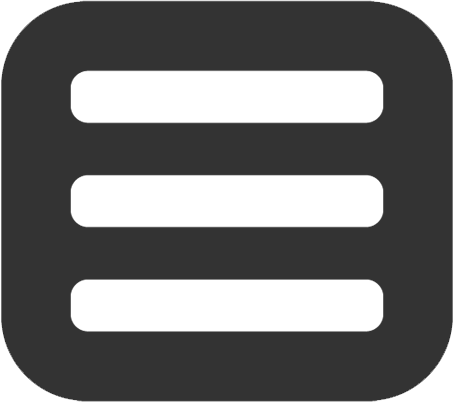上一篇:托福备考第16天——TPO听力材料精听分析(三阶段)(二)
听写并纠错后的结果:
Listen to part of lecture in an archiology archaeology ar class.
A popular misconception about archiology archaeology, some people imagine we just go out into the field, what the shaval with a shovel and start digging, hoping to find something significant.
Well, where while there isn't is an element of looking evolved lucking involved, we haven't have an array of high-tech tools to help us figure out where to concentrate our efforts.
One of the newer tool actually relies on partical particle physics, talked about introdeposenary inter-disciplinary.
Here's the a machine that brings together to two very different sciences. This machine is called a mu on muon detector.
Mu-on Muons are subTomi subatomic particles that result from customed grays cosmic rays.
Okay, let me start over. Cusmec rase aren't actually raise Cosmic rays aren't actually rays. There're They are basically prutalls protons, zipping through outer space that close to light speed. And, when they cli to collide with what the atoms in the earth's atomphere atmosphere, they break up into small of smaller particles, mu-ons muons.
Now, these mu-ons muons are still highly energized, so they can easily pass on down to the Earth earth's surface. In fact, they can pass through solid matter, so they can also penitrate penetrate deep into the surface. And it's this property of mu-ons muons, that archieologists archaeologists are taking advantage of.
Let me explain, with the right kind of equipment, scientists can use mu-on muons to create a kind of picture of the structures they're studied in studying. Let's say we're studying a miring peramidian Mayan pyramid in cental central America. And we're interested in finding out if there're burial our barial tramper chambers or other rooms inside. Well, a mu-on muon detector will show a greater number of mu-ons muons passing through the less dance dense areas inside the pyramid.
Yes, Andrew?
I'm not sure I get how this mu-on muon detector works exactly.
Well, mu-on muons lose energy as they pass through dance dense materials, like the stone walls of the Mayan pyramid. So more mu-on muons and more energetic mu-ons muons well be passing through empty spaces. The muon detector can differentiate the areas where more muons are passing through -- the empty spaces, as well as where there are fewer muons, the worse walls and dance dense areas. These empty spaces will show up as darker, so we wind up a kind of picture of the pyramid, and it's internal structure.
A picture?
Sort of like an actual X-ray image.
Okay, so if we see darker areas inside the pyramid, we would soon assume it's an empty space with more mu-ons muons.
Exactly, with this technology, we can see what's inside the structure before we dig, so we know what exactly where to explore and we can minimize the damage exacvation excavation can cause.
Even a little damage could result in our losing vital information forever.
Now, new-on detecors muon detectors have been around for some time. But they have been improved upon pouncense archaeologists started using them.
In 1967, a physist physicist pew a mu-on placed a muon detector beneath the base of one of the Egption Egyptian pyramids dessert of Giza. And he was looking for bareal champers burial chambers. Now it happend that muon dector found none, but he did damage thread demonstrate that the technique worked.
Unfortunately, the machine he used was so big that many archaeologists doubted new-on muon detection could be practical. How could they get a massive piece of equipment and into, say the jungle of bleads Belize.
Then, there was a the issue of range.
The machine used in 1967 could only scater scan for muons directly a buffet above it, not from the sides. So it actually had to be put underneath the pyramid, so it could look up. That meant, if you want to find out what was inside in an ancient structure, you'd first have to bury the detector beneath it.
There's been a lot of work on this these machine since that. And this problem have been solved bialarged by and large. That's not to say the technology is pefect, it would be nice for example, to have have a system that didn't take 6 months to produces damage an image. I supposed that's better than the year it look for the 1967 study to get result.
But still, well, there's good reason to belive that was with better equipment, we're going to see muon detector is use used much more frequently. They're already been being used in other areas of science, uh, for example, Japanese scientists studying the entire interior of volcanoes and they're plenty of archaeologists who would love to use this technology.
本篇听力主要介绍了muon detector给考古学带来的好处,muon detector指μ介子探测器,早期在1967年,它只能通过在遗址的正下方探测垂直方向的介子,而且形成图像需要6个月以上,并且还很笨重。而现在的muon dector小巧轻便,并且能探测所有方向的介子,是考古学专家的得力帮手,不仅如此,还能跨学科帮助其它科学家。
介子探测器的原理是从宇宙射线开始的,这是跨学科的。宇宙射线中直接照射地球和撞击会让 介子 分离,这些介子还具有高穿透性,考古学正是利用这一特性,来探测遗址内部是否有墓室或很大的空间。这样做的好处是,考古学家不用无目的的去乱挖,同时防止了遗址被破坏。
不容易听出来单词和短语:
isn'tis anhaven'thave an- Mayan pyramid 玛雅金字塔
dancedense 稠密;密度高的- have been improved upon
damage threaddemonstrate 证明a buffetabove itbialargedby and large (这个读法真的很奇怪)damagean image
不认识的单词:
- misconception 误解
- shovel 铲
- particle 粒子;小品词(这不知道是第几次出现了)(可以算是TOEFL高频词了)
- interdisciplinary 跨学科的
- inter-disciplinary 内在事物规律(我不知道TPO为什么要这么翻译,但是鬼知道它读的是不是“跨学科”的呢?)
- muon μ介子
- subatomic 原子
- cosmic rays 宇宙射线
- protons 质子
- zipping 拉链
- zipping through 滑过
- outer space 外太空(为啥特意要提这个单词,是我一开始把它当成“外部空间”理解了,都忘了它还有“太空”这个意思)
- collide with 与。。相撞
- atoms 原子
- penetrate 穿透(第二次出现)
- property 属性
- burial 葬礼
- chambers 室
- burial chambers 墓室
- dense 稠密
- differentiate 区分
- excavation 挖掘
- physicist 物理学家
- Giza 吉萨
- Belize 伯利兹
- interior 内部
- despite 尽管
不熟悉的地道的表达方式:
- Well, while there is an element of luck involved (这里是特指和引出后面we have an array of high-tech to help这个事实)(这里特指他们拥有的一个运气就是指高科技)
- let me start over 让我重新开始
- collide with 与。。相撞
- differentiate 区分
- wind up 结束 (这个表达方式非常独特)
- Sort of like 有点像
- have been improved upon

